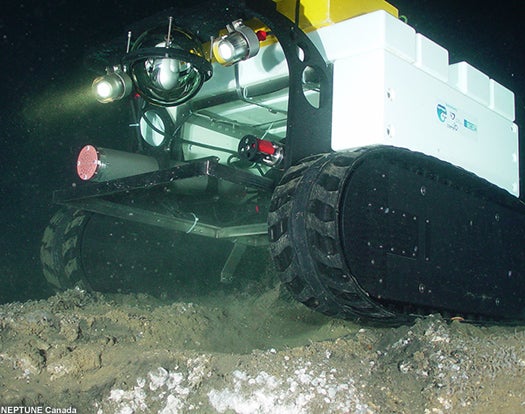First Internet-Enabled Undersea Observatory Now Operational
More people have been to the Moon than to the deepest parts of the ocean, and scientists have more detailed...

More people have been to the Moon than to the deepest parts of the ocean, and scientists have more detailed maps of the surface of Mars than they do of much of the ocean floor. That glaring lack of knowledge about our own planet comes in part from the difficulty of communicating with robots and submarines traveling beneath the waves. As an attempt to address that issue, the new NEPTUNE network went online today, bringing the Internet to the briny deep, and boosting undersea communication, and undersea research, like never before.
Prior to NEPTUNE, communicating with a submersible required either a radio-equipped buoy or physically docking with the craft. Now, NEPTUNE lets a range of experiments, instruments, and undersea robots broadcast their data directly onto the web. This increased connectivity will drastically boost the quantity and quality of the data on the ocean floor, while at the same time significantly reducing the cost of mounting an undersea expedition.
This Internet connection is enabled by a 497-mile ring of fiber-optic cable sitting off the coast of Canada. The cable incorporates five nodes that serve as routers for the Internet-linked experiments trolling around beneath the waves. Each node sits inside a 6.5-ton cage, to protect it from fishing trawlers and giant octopuses.
Check out a cool gallery over at: Scientific American